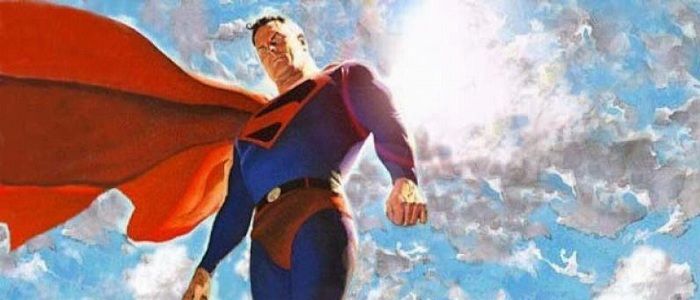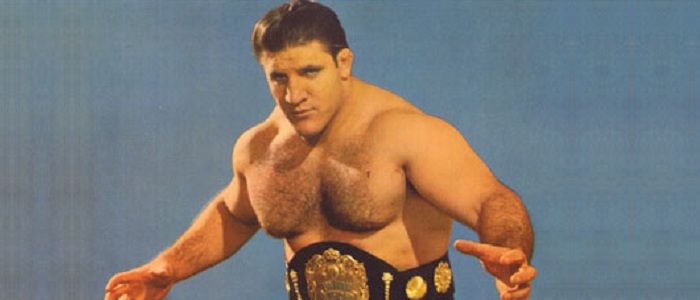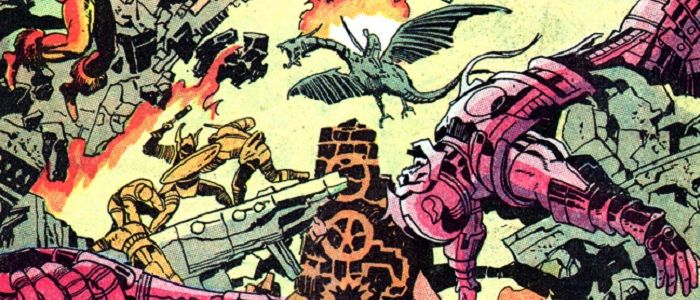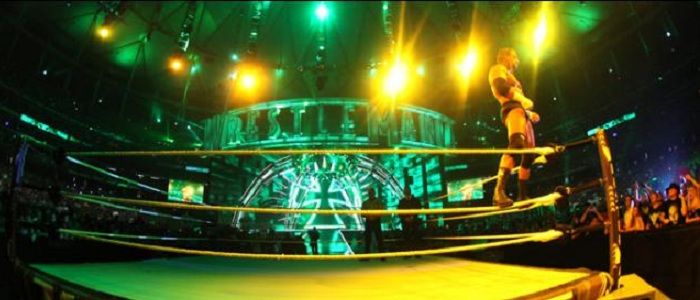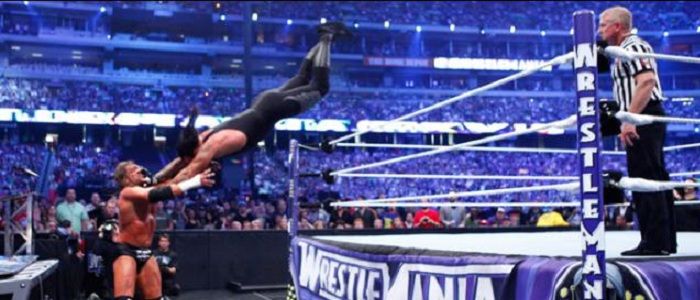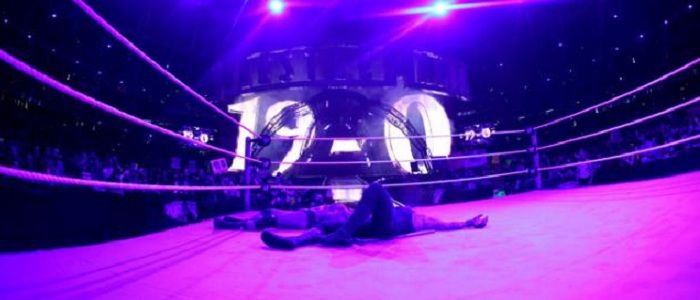wrestling
411’s Countdown to WrestleMania 28: Twilight of the New Gods
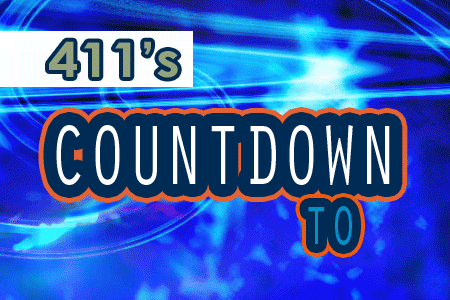
This is an imaginary story (which may never happen, but then again may) about a perfect man who came from the sky and did only good. It tells of his twilight, when the great battles were over and the great miracles long since performed; of how his enemies conspired against him and of that final war in the snowblind wastes beneath the Northern Lights; of the two women he loved and of the choice he made between them; and how finally all the things he had were taken from him save one. It ends with a wink. It begins in a quiet midwestern town, one summer afternoon in the quiet midwestern future. Away in the big city, people still sometimes glance up hopefully from the sidewalks, glimpsing a distant speck in the sky… but no: it’s only a bird, only a plane. Superman died ten years ago. This is an imaginary story…
Aren’t they all?
-Whatever Happened to the Man of Tomorrow by Alan Moore and Curt Swan
This is the story of the twilight of a generation, of the battles they fought and the industry they loved, of how they grew and how they changed, of how the previous generation’s twilight was their dawn, and of how their twilight will usher in the dawn of the next generation. This is the story of the twilight of a generation.
Since the dawn of human civilization, we have created stories to explain the world around us, to pass on knowledge, to teach lessons of morality, and to connect one generation to the next. But perhaps most importantly, these mythologies we have created give us the opportunity to believe. For reasons we can scarcely begin to comprehend, we seem to have an innate need to believe in something bigger than ourselves. We need to believe that our lives mean something, and so we contextualize them within the framework of our mythologies. We give our lives meaning by placing them within mythologies of our own creation. And so in truth, these mythologies are not the stories of almighty gods, noble warriors, and fearsome beasts, but rather the stories of ourselves, told in the abstract, our hopes and dreams reflected in the tales we tell.
One of the great enduring themes in art, literature, and mythology is the cyclic nature of our existence. Life and death, creation and destruction, alpha and omega, one following another time and again, from the beginning of time to the end, neither of which is truly as absolute as it may seem. We see these cycles all around us, and we build them into the very framework of our lives. We learn at an early age that sunset follows sunrise, but for each sunset there is a sunrise waiting to break the horizon. We watch the tide roll in and then retreat back to the watery depths from whence it came, biding its time until rising again. We find love in an instant and lose it just as easily, comforting ourselves with the hope of another love yet to be found. We are children born to our parents, and then we are parents to children who all too soon will be parents themselves. These cycles guide us, and these cycles shape us. They allow us to make sense of a chaotic world, and they allow us to tie our past and our present to our future. These cycles give us hope, for they remind us that twilight is but prelude to the dawn.
As with almost every aspect of our lives, these cycles can be seen in the world of professional wrestling. Large promotions such as WWE script their narratives in monthly cycles in order to build to the next pay-per-view. Overarching stories can be told on yearly cycles with their climaxes coinciding with major shows such as WrestleMania. The industry itself is often described as being cyclical with years of sell-out crowds and massive merchandising being followed by leaner years focused on rebuilding. But of all the cycles within professional wrestling, perhaps the most important is the process of one generation of wrestlers replacing another at the top of the card. After all, this industry is a business, and the only way to make that business sustainable is to continually build new stars. Each generation has its time in the spotlight, always knowing that the hungry young stars of tomorrow are waiting for their opportunity to steal the show.
I’ve argued in the past that the story of WWE, from its time as the WWWF to its time as the WWF to its modern incarnation as WWE, is ultimately the story of four men: Bruno Sammartino, Hulk Hogan, Steve Austin, and John Cena. These are the four men who have truly been the face of the promotion and have defined their respective eras in the promotion’s history. My purpose here is not to re-argue this point, but simply to state that these four men can be used to create a useful framework for organizing WWE history. I tend to break down WWE history into the eras of its defining stars and the eras of transition from one defining star to another.
• The Sammartino Era (April 29, 1963 – April 30, 1977) – The first great era in WWE history began, ironically enough, with “Nature Boy” Buddy Rogers winning the WWWF Championship in a fictional tournament in Rio De Janeiro, but a more concrete beginning to the era occurred a mere eighteen days later when Bruno Sammartino defeated Rogers for the title on May 17, 1963. This was the era of Sammartino, Pedro Morales, Ivan Koloff, and Stan Stasiak. It was defined by historically long babyface title reigns separated by short, transitional heel title reigns. There were only six title changes in the fourteen year span of this era, and during that time the title was held by heels for a combined total of only 48 days.
• The First Transition Era (April 30, 1977 – January 23, 1984) – The Sammartino Era ended when “Superstar” Billy Graham defeated Sammartino for the WWWF Championship on April 30, 1977. This was the era of Graham, Bob Backlund, Jimmy “Superfly” Snuka, Pat Patterson, and Sgt. Slaughter. It is certainly possible to argue that this era should be called the Backlund Era, but I truly do not believe that Backlund can be listed alongside Sammartino, Hogan, Austin, and Cena in the pantheon of era-defining stars in WWE history. However, this era is incredibly historically important, because it was during this time that Vince McMahon replaced his father, Vince McMahon Sr., as head of the promotion. It was also during this era that Vince McMahon’s vision of the modern sports entertainer began to take shape, and it was that vision that would be fully realized in the next great era in WWE history.
• The Hogan Era, a.k.a. The Hulkamania Era (January 23, 1984 – March 20, 1994) – Perhaps the most iconic era in WWE history began when Hulk Hogan defeated the Iron Sheik for the WWF Championship on January 23, 1984. Hogan was the embodiment of Vince McMahon’s vision of the modern sports entertainer, and it was during this era that Hogan would become the most famous professional wrestler of all time. This was there era of Hogan, “Macho Man” Randy Savage, “Rowdy” Roddy Piper, “The Million Dollar Man” Ted DiBiase, and the Ultimate Warrior. This was the era that would forever transform WWE from a regional promotion into a worldwide phenomenon.
• The Second Transition Era, a.k.a. The New Generation Era (March 20, 1994 – March 29, 1998) – The second transition era in WWE history began at WrestleMania X on March 20, 1994 when the New Generation of WWF stars had their true break-out performance and proved that the promotion had finally moved beyond Hulk Hogan. This was the era of Bret Hart, Owen Hart, Shawn Michaels, Razor Ramon, Diesel, Sycho Sid, and the Undertaker, and it was during this era that future stars such as “Stone Cold” Steve Austin, the Rock, Triple H, and Mankind would join the promotion and begin to work their way up the card. This era has been known as a low point for WWE from a business point of view, but this was also the era the successfully made the difficult thematic shift from the cartoony Hogan Era to the gritty Austin Era.
• The Austin Era, a.k.a., the Attitude Era (March 29, 1998 – April 1, 2001) – The most commercially successful era in WWE history began when “Stone Cold” Steve Austin defeated Shawn Michaels for the WWF Championship at WrestleMania XIV on March 29, 1998. This was the era of Austin, the Rock, the Undertaker, Triple H, and Mankind. Many call this era the Attitude Era or the Monday Night War, but for me it will always be the era of its single most iconic star, the Austin Era. While the end point of this era can certainly be debated, I tend to believe that the overarching narrative thread of Austin vs. McMahon that defined the era came to an end when Austin turned heel at WrestleMania X-Seven, thus bringing to a close the Austin Era. In addition, it was during the final few months of this era that WWE acquired WCW and ECW, thus giving itself a virtual monopoly on U.S. professional wrestling.
• The Third Transition Era, a.k.a. The Ruthless Aggression Era (April 1, 2001 – April 3, 2005) – The third transition era in WWE history began with WWE as the sole major professional wrestling promotion in the United States, and the ramifications of that status were felt in the Invasion storyline, the Brand Extension, and the creation of the World Heavyweight Championship. This was the era of Triple H, Shawn Michaels, the Undertaker, Kurt Angle, Eddie Guerrero, Chris Benoit, and Brock Lesnar. Much like how the stars of the Austin Era came into the promotion during the preceding New Generation Era, the Ruthless Aggression Era saw the rise of the future stars of the Cena Era. Most notable among those stars were the OVW Class of 2002, featuring John Cena, Randy Orton, and Batista. Along with Edge, these men would climb up the card during the Ruthless Aggression Era and dominate WWE during the Cena Era.
• The Cena Era (April 3, 2005 – July 17, 2011) – The most recent star-defined era in WWE history began when John Cena defeated John “Bradshaw” Layfield for the WWE Championship at WrestleMania 21 on April 3, 2005. While many in the IWC try to deny the fact, I simply have to believe that John Cena truly does stand alongside Sammartino, Hogan, and Austin as era-defining superstars in WWE history. This was the era of Cena, Randy Orton, Batista, and Edge. During this era, WWE experimented with new methods of building future stars in FCW, ECW, and NXT. This was also the era in which new competition from TNA and ROH truly started to be felt in WWE, most notably through many successful (and several infamously unsuccessful) talent acquisitions.
• The Fourth Transition Era (July 17, 2011 – Present) – The eras in WWE history are most easy to define and delineate with the added perspective of time, and so identifying recent transitions from one era to another is always difficult. However, I tend to believe that the Cena Era ended when CM Punk defeated John Cena for the WWE Championship at Money in the Bank 2011 on July 17, 2011. A new generation of world champions such as Punk, Daniel Bryan, Sheamus, and Miz have already begun to emerge, and WrestleMania XXVIII will be the first WrestleMania since WrestleMania XX that will not feature Cena, Orton, Batista, or Edge in the WWE Championship Match and the World Heavyweight Championship Match. It is also important to note that every superstar-defined era in WWE history has been separated from the next superstar-defined era by a transition era, which would seem to indicate that none of the current main event stars will emerge as the next era-defining superstar. Is that next era-defining superstar already on the roster, toiling away on Superstars or NXT, or is he yet to even make his debut? Only time will tell.
While it is useful to break down WWE history into these major eras, it is of course impossible to assign each star in WWE history to only one era. Every era featured top stars who defined the era, established veterans who were the stars of previous eras, and rising young talent who would become the stars of future eras. There is always some degree of continuity of talent from one era to the next, and it is that continuity between eras that allows WWE history to be read as one continuous narrative spanning nearly fifty years. However, while many stars in WWE history have made the transition from one era to the next, there are far fewer that have had the longevity to span several eras. There are only a handful that have survived from era to era to era to era while continuing to perform at the absolute highest level. They outlast their closest friends, their most respected peers, their greatest rivals, and their fiercest adversaries. And when the time comes for those survivors to finally walk away from the ring, it truly is more than just the end of an era. It is the twilight of a generation.
There came a time when the Old Gods died! The brave died with the cunning! The noble perished, locked in battle with the unleashed evil! It was the last day for them! An ancient era was passing in fiery holocaust!
– Epilogue from New Gods #1 by Jack Kirby
WrestleMania XXVIII’s Hell in a Cell Match between the Undertaker and Triple H with Shawn Michaels as the Special Guest Referee has been billed as the End of an Era Match. It will be the culmination of a WrestleMania storyline that began four years ago when Shawn Michaels defeated Ric Flair at WrestleMania XXIV, but very well may also bring to a close the decades of shared history that these three men have in this industry. Of course, nothing is official. Nothing here is set in stone as it was when Ric Flair put his career on the line at WrestleMania XXIV or when Shawn Michaels did the same at WrestleMania XXVI. But that scarcely matters, for this match is about far more than careers and retirements. As Triple H has said, this match is simply about the end.
Taken together, Shawn Michaels, the Undertaker, and Triple H have a total of 74 years of experience in the professional wrestling industry, and in that time they have come to serve as the cables that tie the era of the territory system to today’s modern era of sports entertainment. They have wrestled in the AWA, WCCW, Mid-South Wrestling, and WCW. They began their careers wrestling alongside the likes of Hulk Hogan, Ric Flair, Nick Bockwinkel, Bruiser Brody, and the Von Erichs, and they ended their careers wrestling alongside the likes of John Cena, CM Punk, and Daniel Bryan. Pause for just one moment to consider that fact. These men truly have bridged generations. While Shawn Michaels, the Undertaker, and Triple H have wrestled many opponents in many promotions, their legacies will always be tied to WWE. Of their 74 years of experience, 63 of those have been spent in WWE. They have held 24 WWE and World Heavyweight Championships. They won those titles from men such as Hulk Hogan and Bret Hart and lost them to men such as Randy Orton, Batista, and Edge. They have headlined 12 of the last 16 WrestleManias, and yes, I do mean “headlined” in the strictest last-match-on-the-card sense. And maybe most important of all, they have been survivors, carrying on from one era in WWE history to the next for more than twenty years now.
Shawn Michaels and the Undertaker debuted in WWE during the Hogan Era. The stars of that era are the stuff of legend – Hulk Hogan, “Macho Man” Randy Savage, “Rowdy” Roddy Piper, “The Million Dollar Man” Ted DiBiase, the Ultimate Warrior, and even Ric Flair. The giants of that era would cast a long shadow over every generation to come, but soon enough it was their time to step aside (some more willingly than others) and let a New Generation have the spotlight. Michaels and the Undertaker were two of the pillars of WWE’s New Generation, two of the men saddled with the unenviable task of picking up the pieces of a promotion struggling to find a new identity. Triple H soon debuted and quickly began to prove that he too was a worthy addition to this New Generation. This era in WWE history is often remembered as a low point for the promotion, both creatively and financially, but it is important to remember that several of the highest rated and most beloved matches in WWE history (Hart vs. Hart, Michaels vs. Ramon – Ladder, Hart vs. Hart – Cage, Michaels vs. Hart – Ironman, Hart vs. Austin – Submission, Michaels vs. Undertaker – Hell in a Cell, etc.) took place during this era. Michaels would be absent from the subsequent Austin Era, but the Undertaker and Triple H were two of its biggest stars. As the Austin Era gave way to the Ruthless Aggression Era, Michaels would return and join the Undertaker and Triple H as respected veterans who could still challenge for world titles on a regular basis. Michaels, the Undertaker, and Triple H became legends and would serve as the measuring sticks for the headline stars of the Cena Era.
And just like that, over the course of decades and the span of eras, the New Generation became the old guard. Just as they once replaced the icons of the previous generation, they are now on the verge of being replaced by the icons of the next generation. They are remarkable not for having the courage and the audacity to believe they could replace Hulkamania, but rather for having the skill, determination, creativity, and longevity to actually do it. Shawn Michaels, the Undertaker, and Triple H were contemporaries of legends such as Bret Hart, Razor Ramon, Diesel, Steve Austin, and Mankind, but they have outlasted them all. In fact, not only have they outlasted them all, but they have done so while continuing to put on world-class matches. When all is said and done, I truly believe that these three men will be regarded as three of the top ten professional wrestlers of all time. They have had phenomenal careers, but it many ways their legacies will be defined by the truly captivating way in which those careers seem poised to finally come to a close.
The narrative threads leading to the Hell in a Cell match at WrestleMania XXVIII stretch back for decades, but the ways that those years of history would finally be woven together didn’t begin to become apparent until WrestleMania XXIV in 2008. Ric Flair is regarded by many as the greatest professional wrestler of all time, and ending his legendary career took a toll on Shawn Michaels. After WrestleMania XXIV, Michaels pushed himself to prove that he was worthy of being the man that ended Flair’s career. He embarked on a legendary feud with Chris Jericho that stretched across most of 2008, and at the following WrestleMania he attempted to climb the highest mountain in sports entertainment – the Undertaker’s Streak. Michaels failed to reach the summit at WrestleMania XXV in 2009, but he would make one more attempt at WrestleMania XXVI in 2010. He had become a man with a singular mission, a man willing to put his own career on the line, a man in many ways still haunted by the grief of besting his hero two years earlier. Once Shawn Michaels defeated Ric Flair, his fate was sealed. Michaels’ quest to give meaning to the end of Flair’s career by continuing to validate his own led inevitably to the end of his career at the hands of the Undertaker.
And then there were two. Triple H rose to challenge the Undertaker’s Streak at WrestleMania XXVII in 2011 not only to avenge his fallen friend, not only to honor his fallen mentor, but also because he was the only one left who could. Like a twisted version of the Quickening, Flair had fallen to Michaels, Michaels had fallen to the Undertaker, and the only way Triple H could deal with the loss of his best friend and his mentor was to be the man to fell the Undertaker. Triple H failed to end the Streak that day, but he scored a very important moral victory. He walked away from the battle – the Undertaker did not. Triple H found peace that day, but he ignited a fire in the Undertaker. It was a fire of rage and unrest that burned for a year, and now it is the Undertaker who comes to the battlefield in search of vindication. He has goaded Triple H into one more match by making Triple H question his own legacy. Triple H had been driven by the memories of Shawn Michaels and Ric Flair, but now he has become tormented by them. The very meaning of his career has become tied to his ability to do what his best friend and his mentor could not do, what no man has ever been able to do – defeat the Undertaker at WrestleMania.
But in the course of their mind games, the Undertaker and Triple H may have planted the seeds of their own destruction by continually invoking the name of Shawn Michaels. They spoke of him with respect and admiration, but they also used his name to taunt one another. They honored his memory, but all too often it seemed like the memory of a dog that had to be put down for his own good. And so Shawn Michaels returned once more and became the special guest referee for the final confrontation between the last of their kind. He continues to honor his word to the Undertaker, and he has not returned to the ring as an active competitor. But even without technically being in the match, it is Shawn Michaels who ultimately holds the power to decide who wins the match. History – and logic – would seem to indicate that Michaels’ involvement will be a huge advantage for Triple H. As a special guest referee, Michaels cost the Undertaker the WWF Championship at SummerSlam 1997 and helped Triple H win the WWF Championship at Judgment Day 2000. He is Triple H’s best friend, and helping Triple H defeat the Undertaker in Hell in a Cell would give Michaels a measure of revenge against the man that ended his career. And yet, at the same time, there is undoubtedly a part of Shawn Michaels that wants to see the Undertaker defeat Triple H. If Triple H defeats the Undertaker, then one could argue that Triple H is ultimately a better wrestler, and maybe even a better man, than Shawn Michaels. Michaels can always take solace in the fact that his career was ended by a man that cannot be beaten at WrestleMania, but he can only do so as long as the Undertaker’s Streak remains intact. And so Shawn Michaels enters Hell in a Cell as a man conflicted, torn between friendship and ego, holding the legacies of three historic careers in his hands.
And so we have come to Ragnarök, the great battle of the gods that serves as the end of all that has been and the beginning of all that will be. Perhaps the most important aspect of the impending Hell in a Cell match is that it allows the fans to add as much or as little to the story as they would like. In today’s era of sports entertainment, we are often force fed feuds that last only a few weeks and whose only real purpose is to build to yet another pay-per-view event. We are told shallow and forgettable stories and are seldom asked to bring any of our own imagination into the equation. And yet, in contrast, here is a feud that has been built on the shared history between these men and on the words that didn’t need to be spoken. For some fans, the Hell in a Cell match will simply be an enjoyable brawl between two established veterans. And that’s fine. But for other fans, this match will be the culmination of a generation’s worth of professional wrestling. We are able to read into the words and actions of all three men and draw our own conclusions about their true motivations. The shades of gray that were so famous during the Austin Era have risen once again in a feud that stands in stark contrast to the others on the card. There are no heroes or villains here, only legends, only warriors.
As I said, this feud has given each fan the opportunity to fill it with his or her own level of detail and intricacy, each fan ultimately making his or her own assumptions about its true meaning and implications. This has been called “The End of an Era” match, but no long-term stipulations have actually been set. Neither the Undertaker nor Triple H’s career is technically on the line in this match. It is completely possible that “The End of an Era” is simply a tag line, simply a catch phrase, simply a sales pitch. But I have a sneaking suspicion that it is something more. I truly believe that this will be the Undertaker’s final match. It’s no secret that he has been working a reduced schedule over the past few years, and this will be his first match since last year’s war with Triple H. However, a retirement stipulation simply wouldn’t make sense for the Undertaker. Ric Flair and Shawn Michaels were legends and icons, but they were men. They were professional wrestlers who could be made to retire. The Undertaker is not a man. He is a mythological warrior, a creature of darkness, a force of nature. You cannot make the Undertaker retire. All you can hope to do is defeat him. All you can hope to do is end him. And to end the Undertaker, all you have to do is end the Streak. There is no distinction between them anymore. The Undertaker is the Streak, and the Streak is the Undertaker. They are one and the same. The Undertaker’s days as a full-time competitor are over. His days as a world champion are over. His best matches are behind him. All he has left is an accomplishment that I can say with absolute certainty will never be replicated. All he has left is the Streak. And if the Streak were to end, so too would the Undertaker. There would simply be no reason for him to go on.
The possibility of ending the Streak has been discussed in great detail ever since the notion of keeping track of the Streak began. Traditional logic falls into one of two camps, either that the Streak should never be broken or that it should end at the hands of a young star who would in the process get quite possibly the greatest rub in the history of the industry. I understand the logic behind both of those scenarios, but I also see flaws in both plans. If the Steak were to never be broken, then the possibility of the Undertaker having one more WrestleMania match would always exist. His dark specter would hang over WrestleMania forever more, and we as fans would never get closure. On the other hand, while a young star would certainly get an enormous push after ending the Streak, the honest truth is that no young star deserves to end the Streak. A career can’t be built on a single accomplishment. It has to be built match after match, night after night, year after year. Ending the Streak would help a young star make a name for himself, but it wouldn’t make him a legend. No single match can do that. And when viewed in that light, I have to believe that the Streak is simply more valuable than a potential push for any young star. The Streak is a unique and almost unfathomable part of wrestling history. It is not a notch on someone’s belt or a line on their resume. The end of the Streak should be a singular moment in the history of this industry, and the only way for that to happen is for it to come at the hands of another true legend. And with the New Generation dwindling, the only man left to do the deed is Triple H.
There are those who say that having Triple H end the Streak would be bad for the business, because the inherent value of having ended the Streak would not be passed on to the next generation. While I agree that continually building new stars and planning for a sustainable future is definitely good for business, I also believe it is vital to remember that the business in question is that of putting on great wrestling matches. This business means nothing if it loses the ability to put on great wrestling matches, and so sometimes what’s good for the business is simply putting on the best damn wrestling matches you can. Triple H and the Undertaker aren’t just legends because of their longevity. While they each may have lost a step or two since their prime, they can both still out perform almost every wrestler to ever lace up a pair of boots. Their talent, their experience, and their shared history virtually guarantee that they will put on a great wrestling match at WrestleMania. And I will never be the guy to say that a great wrestling match is bad for the business.
But putting what’s good for the business aside for a moment, there would also be a certain poetic justice and comforting symmetry in Triple H ending the Streak. Ric Flair’s career was ended by Shawn Michaels. Shawn Michaels’ career was ended by the Undertaker. If the Undertaker’s career was ended by Triple H, then he would stand as the last of his kind, the lone survivor of a different breed of men. They were more than just men, they were myths, and they could not be defeated by any but their own kind. And when the gods go to war, in the end only one may survive. There will certainly be cynics who claim that is exactly what Triple H wants. They will claim that, just like always, he has maneuvered himself into a position to look the like the biggest star in the industry. But that would be missing the point, because once Triple H becomes the last man standing, then he too will have no more battles to fight. Triple H is going to be the man to inherit WWE, both literally and figuratively, and so I personally have no problem with him ending the streak and closing the door on the New Generation. To the victor go the spoils, and to the mightiest warrior go the keys to the kingdom. Triple H may have a few sporadic matches after ending the Streak, but those truly would be to give the rub to his opponents. By defeating the Undertaker in Hell in a Cell, Triple H would effectively be ending both of their careers.
At any rate, that’s how I see the feud and how I would book the match. Many of you may see the situation differently, and as I said, that’s part of what makes this feud so remarkable. This is one of those rare feuds that lets the fans tell the story they wish to tell. Shawn Michaels, the Undertaker, and Triple H have presented us with the framework of a true epic, but it is up to us to tell the full story. This is their story, but it is also our story. Because this is the story of the twilight of a generation, but not just a generation of wrestlers. This is the story of the twilight of a generation of wrestling fans.
The guilty undertaker sighs.
The lonesome organ grinder cries.
The silver saxophones say I should refuse you.
The cracked bells and washed-out horns,
Blow into my face with scorn,
But it’s not that way,
I wasn’t born to lose you.
– I Want You by Bob Dylan
Years ago, when WWE Heat finally took its last dying breath as an afterthought on WWE.com, Larry asked me what I wanted to do now that my days as a Heat reporter had come to a close. What I told him that day has guided and framed every word that I’ve written since. I told him simply that I wanted to write about what it means to be a fan of professional wrestling. I wanted to write about what it means to truly love something that most of your friends and family will never understand. I wanted to write about the stories we tell simply by being fans. I’ve always tried to find the truths that connect us all as fans, to push aside the bickering and contentiousness of the IWC to celebrate the ties that bind us all together. And yet now I realize that I can’t do that today. The story I’ve told has been the story of a particular generation of wrestling fans, and there will be fans both older and younger who simply can’t relate to that story. But that’s okay, because they have their own stories to tell as well.
As a frame of reference, I’m 32 years old. I was born in 1979, and today I’m writing to those of you who fall within a few years of that yourselves. We’ve seen Bruno Sammartino and “Superstar” Billy Graham wrestle on DVD, but none of us saw their greatest matches in person. We were the generation of children that fuelled Hulkamania. We were the target demographic of Hulk Hogan’s Rock ‘n’ Wrestling, and the most outlandishly cartoony aspects of the Hogan Era were aimed directly at us. We then became the adolescents that wanted something new and different and latched on to the New Generation. We were the teens and early twenty-somethings that reveled in the gritty maturity of the Austin Era. And then we became the adults who can’t quite understand what those kids see in John Cena. But on some level we still always clung to our heroes of the New Generation, if for no other reason than we could. We may have been introduced to professional wrestling by Hogan’s generation, but we grew up with the New Generation. We became adolescents and teens and then adults as they inherited the spotlight. We all grew up together. They weren’t just the New Generation – they were our generation.
We are what I would call the second generation of “smarts.” The first generation were the teens and twenty-somethings of the Hogan Era. They were the tape traders and the dirt sheet fanatics, and later they gathered together in the fledgling days of the internet to form what we now know as the IWC. But we were the generation that inherited the IWC from that first generation of smarts. We owe them a lot, but ultimately we are the ones that made the IWC into what it is today. And as we watch the sun set on our generation of wrestlers, I realize that the sun is also setting on an entire chapter of our lives as fans. We grew up with these men. They were more than just our wrestlers. They were more than just our generation. They were our myths, our legends, our folk heroes. And as their story draws to a close, I often wonder if so much of the anger and animosity in today’s IWC stems from a deeply buried sense of loss. We’re losing our heroes, and on some level that means we have to admit that we’re losing a piece of our childhood.
We’ve all head the jokes about professional wrestling being immature and childish, but the uncomfortable truth is that there actually is a degree of truth in that statement. I believe there is great value to be had in being able to hold on to our sense of childlike wonder, but I will also admit that many of us use professional wrestling to fill a hole in our lives. This is a much larger conversation for another day, but suffice it to say that, even after we become adults, in many ways it is much easier to relate to professional wrestling as a child than as an adult. And yet now, as we stand poised to bear witness to what very well may be the final battle of our New Generation, we have to begin to wonder what comes next, not just for our heroes, but for ourselves.
What I’ve begun to realize is that it’s time for our story as fans of professional wrestling to come to a close. We became fans of these mythical heroes. We grew with them. We matured with them. And now it’s time to say good-bye with them. But as mythology reminds us time and again, twilight is but prelude to the dawn. For our generation of wrestling fans, that means the dawn of a new era in our fandom. We will probably never look at the stars of today’s generation in the same way that we looked at the stars of our generation. I was initially going to say that the industry has changed, moved away from mythological heroes toward real-life men and women. But as I’ve been writing, I’ve come to wonder if the change we feel has less to do with a change in the industry and more to do with a change in ourselves. We needed heroes then. We needed mythological heroes to spark our imaginations and inspire our dreams. But now we’ve used our imaginations to realize our dreams. We’ve crafted our lives as our heroes fought their epic battles. We can respect and admire today’s stars, and we can enjoy their matches, but on some level they will never be our folk heroes. They are the heroes of a new generation, a generation that will someday take over the IWC and the bulk of wrestling fandom from us, a generation that we can help create and shape. Because as we’ve grown alongside our heroes, we’ve also gotten engaged and gotten married and had children of our own. This new generation of professional wrestlers will be their generation, and part of the dawn of our generation’s newfound fandom will be seeing the wonder in their eyes and remembering it in our own. But first we need to give ourselves the freedom to look at this new generation of professional wrestlers in a new way so that we can be fans in a new way. We can’t keep comparing today’s stars to the stars of our youth, because we will never be able to judge them objectively. We simply need to accept and respect these new stars on their own merits, and in doing so find a new way to simply be fans of their incredible work.
This is the story of the twilight of a generation. For those of us who grew up with the New Generation, the Hell in a Cell Match at WrestleMania XXVIII will be the twilight of our days as fans of professional wrestling. At least I hope it is. Because that will mean a new dawn is coming, and with that dawn the ability to redefine ourselves as fans of the industry we will always love. And so this is the story of how we say goodbye to our heroes and wait for the new dawn. Because through the light and the dark, through the twilight and the dawn, the one constant that binds our generation to every other generation is that we will always be fans.


